|
|
|
Книги издательства «Phaidon Press»

|
A survey of the life and times of Rembrandt van Rijn, one of the most famous and well-loved artists. From his precocious early work in his native Leyden to his emotional late work and his immense artistic influence, Rembrandt's life is traced within the context of the Netherlands in the 17th century, the highly literate and cosmopolitan environment of Amsterdam and Rembrandt's wealthy and influential patrons. |
|
«Born in Philadelphia, Steve McCurry studied history and cinematography at Pennsylvania State University before working as a freelance photographer in India. He is most famous for his evocative color photography, which has captured stories of human experience that, in the finest documentary tradition, transcend boundaries of language and culture. His career was launched when he crossed the Pakistan border into rebel-controlled Afghanistan — just before the Russian invasion — to take the first pictures of the conflict. Since then many of McCurry's images have become modern icons. A high point of his career was the rediscovery of an unidentified Afghan refugee girl, which many have described as the most recognizable photograph in the world today. His coverage won him the Robert Capa Gold Medal for Best Photographic Reporting from Abroad, an award dedicated to photographers exhibiting exceptional courage and enterprise. McCurry has covered many areas of international and civil conflict, including the Iran-Iraq war, Beirut and the Gulf War. His travels have also taken him to southeast Asia and the spiritual temples of Angkor Wat and Cambodia, made known to many through his memorable images for «National Geographic» magazine. A member of the prestigious international photo agency Magnum since 1986, he is the recipient of numerous awards including Magazine Photographer of the Year, awarded by the National Press Photographers Association. This was awarded in the same year in which he won an unprecedented four first prizes in the World Press Photo Contest. He has won the Olivier Rebbot Memorial Award twice. This monograph on McCurry follows a chronological order, identifying major themes and examining key works; a beautifully produced, affordable introduction to one of the leading figures in photography today.» |
|
«The Art Museum is the finest art collection ever assembled between two covers. This revolutionary and unprecedented virtual art museum in a book, features 1,000 oversized pages of over 2,700 works of art. It is the most comprehensive and visually spectacular history of world art ever published. Ten years in the making, this unique book was created with a global team of specialists in all fields of art, including museum curators and educators, who have collected together important works as they might be displayed in the ideal museum for the art lover. Unrestricted by the constraints of physical space, this luxurious book is organized by innovative color-coded «galleries» «rooms» «corridors» and «special exhibitions» which display hundreds of paintings, sculptures, frescos, photographs, tapestries, friezes, installations, performances, videos, woodblock prints, folding screens, ceramics and manuscripts that tell the history of world art. This is the only museum to house Leonardo's Mona Lisa, a collection of Rembrandt's finest self portraits, Velazquez's Las Meninas and Picasso's Guernica, as well as ceramics from China, Hokusai's woodblock prints, gold artefacts from Peru, and works by Jackson Pollock in one place. With intelligent in-depth text throughout, explanatory labels for each artwork, a comprehensive glossary and detailed location maps, The Art Museum, is accessible for everyone from casual art fans to experts in the field.» |
|
Examines the way in which Venice's unusual topography has influenced the form and type of the city's buildings. The text looks at the city's most important monuments such as the Rialto Bridge and the Basilica of San Marco, discusses important building types such as churches and palaces, and also looks at the urban fabric of the middle-class and working-class districts of the city. The buildings are set in their historical context and the text is illustrated with photographs, and paintings and prints by some of the artists who have recorded the canals and building of Venice, from Carpaccio and Bellini to Ruskin. |
|
Andy Warhol (1928–1987) captured the popular culture of his age through his iconic drawings, paintings, films and prints.He made as great an impact on the world of art as any of his contemporaries, ushering in a fundamental transformation in our visual culture to the mediated image. Yet perhaps his greatest work was his own identity; in his quest for fame and fortune, Warhol fashioned himself into a media superstar. This illustrated survey spans the entire array of Warhol’s art, from his paintings of Campbell’s soup cans, Brillo boxes, dollar bills to his multiple portraits of such American stars as Marilyn Monroe and Elvis Presley. Examining the scene at Warhol’s studio – the famous Factory – as well as his forays into film and multimedia ‘happenings’, this book is the perfect introduction to his life and work. |
|
The first comprehensive monograph covering the complete career of Elliott Erwitt (b.1928), one of the leading photographers of his generation, and an influential member of the Magnum photographic agency since 1954. Offers a snapshot of the famous and the ordinary, the strange and the amusing over a 50-year period, through the lens of one of the period's finest image makers. Contains over 200 previously unpublished photographs to reveal the extent of Erwitt's prolific photographic output. Includes images of places, things, people and animals all over the globe, captured in Erwitt's unmistakable, often witty, style. |
|
Includes an in-depth chronology of Bacon's life and work. Accompanies the Edinburgh International Festival at the Scottish National Gallery of Modern Art, Edinburgh, June 4 — Sept 4, 2005. |
|
PATTERN is the follow-up to the 2005 Phaidon success SAMPLE, presenting 100 of the most creative fashion designers who have recently emerged internationally. Selected by 10 of the most respected figures in the field — a mixture of leading designers, stylists, editors, educators, bloggers and writers — it is a must-see catwalk in a book. |
|
A perfect introduction to the life and works of Robert Rauschenberg. Part of a brand new series of well-illustrated, short introductory books on the visual arts. |
|
A stunning cookbook containing more than 50 authentic recipes from the tables of Sicily, the most colorful region of Italy. Recipes are accompanied by texts detailing Sicilian ingredients, producers, food markets, and specialty stores. |
|
A celebration of 300 of the finest works of art and expressions of the Christian faith from the millennium between the end of the Roman Empire and the beginning of the Renaissance. |
|
An up-to-the-minute survey of contemporary drawing featuring 115 artists from around the world, Vitamin D2 allows the reader to look at the medium in detail and study drawing's unique properties in relation to itself, to contemporary art and to the world at large. Phaidon's influential Vitamin series began in 2002, offering an overview of current practice in a single medium within the arts. Now in its second decade, the series continues to expand, with Vitamin D2 the second volume devoted to the medium of drawing. Nominated by seventy-eight respected figures working internationally in contemporary art, Vitamin D2 presents the work of 115 artists who are currently emerging on the world stage, have become established since the first volume was published in 2005, or who have made a significant contribution to the medium of drawing in this time. With the participating artists born in over ninety cities, towns and villages in more than forty countries, each artist's entry is accompanied by a text written by one of forty-five prominent critics, journalists, academics and curators. An introductory essay by Christian Rattemeyer, Associate Curator of Drawings at the Museum of Modern Art, New York, offers an engaging overview of recent and current drawing practice. Illustrated with over 500 images, Vitamin D2 features practices ranging from highly accomplished figurative drawing to abstract explorations of the medium, in materials including pencil, charcoal, crayon, pastel, ink, watercolour and digital drawing. Traditional techniques are matched by new approaches, often pushing the boundaries of drawing into collage, towards painting, sculpture, architecture, illustration, animation, performance and beyond. A broad range of genres, styles and subjects is evident in diverse forms, from drawings that fit in the palm of the hand to works that cover an entire courtyard. Vitamin D2 reflects the vitality and energy of current drawing, demonstrating that artists continue to consider drawing an essential vehicle for addressing and interacting with the world today. Both a reference book for the art world and an accessible introduction for newcomers to the scene, Vitamin D2 provides an indispensable guide to drawing today. |

|
Cook it Raw tells the story of an exciting collection of avant garde chefs who come together to create unique dining experiences that explore and question social, cultural and environmental issues. Held initially in Copenhagen to mark the 2009 climate change summit the first 'Raw' dinner challenged the chefs to examine the issue of sustainability. As the events have developed so too have the issues, themes and general philosophy of the group. Winter and the question of creativity (Collio-Italy), the Wilderness and culinary comradeship (Lapland) and tradition and the artisan (Iskikawa-Japan) have all been explored on the plate by the likes of Rene Redzepi, Albert Adria, Alex Atala, Daniel Patterson, Magnus Nilsson, Inaki Aizparte, Massimo Bottura and Claude Bosi. Normally reserved for a select number of diners this book reveals for the very first time the 'Raw' collective's philosophy and creative endeavours. With contributions from leading food writers and 'Raw' supporters such as Antony Bourdain, Jeffrey Steingarten and Andrea Petrini; plus, over 400 behind-the-scenes images of the events and an inspiring collection of the chefs' own 'Raw' recipes, notes and anecdotes — Cook it Raw is an exclusive window into the world's most progressive culinary collective. |
|
Like its successful predecessors 10x10 (published in 2000) and 10x10_2 (published in 2005), 10x10_3 is a comprehensive overview of contemporary world architecture. Generously illustrated, this volume presents 100 of the world's most exceptional emerging architects, selected by 10 esteemed members of the international architecture community. Arranged alphabetically by architect, the book features more than 1,500 illustrations and approximately 250 buildings and projects from the past five years, including recently built work as well as competition entries. The result will be an up-to-the-minute collection representing the best of both global and regional architecture around the world. |

|
Abstract Expressionism emerged in New York in the years immediately following the Second World War and quickly became one of the most powerful and influential movements in the history of modern art. Building on developments in European avant-garde art of the preceding decades, a wave of artists such as Willem de Kooning, Jackson Pollock, Barnett Newman and Clyfford Still developed a new abstraction that was simultaneously elemental and sophisticated. Though several of Abstract Expressionism's key figures were emigres, including Mark Rothko, Hans Hofmann and Arshile Gorky, it was art's first definitively American movement, establishing New York as the new capital of artistic innovation for years to come while creating a visual language that would soon reach to the farthest corners of the globe. The enduring importance of Abstract Expressionism reflects the boundless ambition of its practitioners and their engagement with the key intellectual currents of their time, including existentialism and Jungian mysticism. For many critics and art historians, their achievements represent the high-water mark of the modernist movement begun almost a century earlier. Abstract Expressionism continues to occupy a distinguished place not only in history books and museum collections but also in the popular consciousness, where its enduring appeal is testament to its profound achievements. Editor Katy Siegel has assembled a complete overview of the subject in three sections. The definitive Survey recounts in detail the movement's emergence, high period and later accomplishments, incorporating both contemporaneous critical writing and up-to-the-minute scholarship. The Works section presents large full-colour images of over 200 key artworks, each accompanied by an informative caption. And the Documents section provides a generous archive of primary and secondary texts, including artist's statements, exhibition reviews and critical writings. The extensive back matter includes biographies on all the artists and authors plus a full bibliography. |
|
The Florentine architect and sculptor Filippo Brunelleschi (1377 — 1446) was a key figure in the Italian Renaissance. This comprehensive monograph, written by the respected art historian Eugenio Battisti, considers Brunelleschi's major contribution to Renaissance culture, discussing his interpretation of classical antiquity and his experiments with perspective. These led to the development of a rational architectural language where every single part is harmoniously blended and in proportion with the whole. This approach underpinned all of his architecture, and helped him to adapt antique forms to the needs of the Christian religion. This book is a detailed record of all Brunelleschi's major architectural works including The Foundling Hospital (c.1419-45), the Pazzi Chapel (c.1441 — 1460) and the technically innovative dome of S Maria del Fiore (c.1420-1436) that dominates the Florence skyline and is thought to contain more than four million bricks. The book also includes his military projects and his work as a goldsmith and sculptor as well as sections on his literature. As well as containing extensive illustrations, it concludes with a chronology of Brunelleschi's life and his times. |
|
«India: The Cookbook» is the first comprehensive guide to Indian cooking, with over 1,000 recipes covering every aspect of India's rich and colourful culinary heritage. Unlike many other Indian cookbooks, it is written by an Indian culinary academic and cookbook author who lives and works in Delhi, and the recipes are a true reflection of how traditional dishes are really cooked all over India. They have been carefully edited to ensure that they are simple to follow and achievable in western kitchens, with detailed information about authentic cooking utensils and ingredients. Indian food has been hugely popular in the UK for many years, and the appetite for Indian food shows no sign of diminishing. Now, for the first time, a definitive, wide-ranging and authoritative book on authentic Indian food is available, making it simple to prepare your favourite Indian dishes at home, alongside less well-known dishes such as bataer masalydaar (marinated quails cooked with almonds, chillies and green cardamom), or sambharachi kodi (Goan prawn curry with coconut and tamarind). The comprehensive chapters on breads, pickles, spice pastes and chutneys contain a wide variety of recipes rarely seen in Indian cookbooks, such as bagarkhani roti (a rich sweet bread with raisins, cardamom and poppy seeds) and tamatar ka achar (tomato and mustard-seed pickle). «India: The Cookbook» is the only book on Indian food you'll ever need.» |
|
Tibet has suffered extreme political turmoil and upheaval over the last 50 odd years. Occupied in 1950, Red Guards destroyed thousands of official buildings and holy places during the Cultural Revolution, and religious freedom and traditional education are still severely under threat. Due to the strength of Tibetan faith in Buddha, in the Dalai Lama, and against the odds, many buildings have been reconstructed, their devotion and belief remain extraordinarily strong. Buddhism permeates every aspect of a Tibetan's life, whether living in Tibet or in exile in Nepal, India or the United States. A magnificent and time-stopping work, The Path to Buddha is divided into five parts, in which we see the monks in animated discussion, meditation and prayer; and we follow the devout believers on their arduous journeys to prayer. The two main chapters are interspersed with sections of portraits of this proud and dignified people whose own innate sense of their own being can be seen in the simplest of things, such as the way they dress and adorn themselves. |
|
'Art and Photography' surveys a rich and important history, from the 1960s to the 21st century. Arranged thematically, it presents works by the most significant international artists who have explored and extended the boundaries of photography. This influential body of work by over 160 artists over four decades is contextualised in the 'Documents' section by original artist's statements and interviews, as well as lucid reflections on photography by major thinkers of the era such as Roland Barthes and Jean Baudrillard. Featuring some of the worlds most innovative artists, such as Andy Warhol, Joel Meyerowitz, Wolfgang Tillmans, and John Baldessari, and influential writers, Laura Mulvey, Jacques Derrida, Jean Baudrillard, Walter Benjamin, Roland Barthes, and Marcel Proust, Art and Photography offers a expansive view of some of the key themes and movements associated with this practice such as memoirs, archives, the studio image, the urban, and every day, documentary practice, objects, media, testament, portraiture, land art, feminism and consumerism. Contains interviews, artists writings, bibliography, artists and writers biographies, index, and over 200 illustrations. |
|
«The English Garden» is an illustrated survey of 100 iconic, significant and beautiful gardens in England, from the sixteenth century to the present day. This accessible and informative source book includes an unrivalled range of gardens by designers, makers, patrons, artists, architects and literary figures — from Sir Edward Phelips Montacute House (1590), to today's award-winning designs and large-scale environmental creations, such as Nicholas Grimshaw's Eden Project in Cornwall (2001). Following the format of Phaidon's popular «The Garden Book», «The English Garden» is an easy-to-use guide with 100 gardens organised in chronological order. Each garden has been chosen for its unique contribution to the develoment of English garden design throughout time.The selection is comprehensive and covers all key styles and movements — from the Dutch-influenced gardens of the eighteenth century, such as Manyard Colchester's Westbury Court garden (1705), and the formal gardens of the nineteenth century, like Sir Charles Barry's richly planted terrace at Harewood House (1844), to the Modernist creations of the early twentieth century and gardens by today's leading designers. Other examples include the subtropical splendour of Tresco Abbey Gardens (1834), the quintessential Arts and Crafts garden of Wightwick Manor (1887), the Italian Renaissance-inspired garden at Iford Manor (1899) and the romantic herbaceous borders of the White Garden at Sissinghurst Castle (1948).»The English Garden» presents seminal gardens by early English landscape architects such as William Kent and Capability Brown, the work of great horticultural masters and plantsmen like Christopher Lloyd, Gertrude Jekyll and Vita Sackville-West, as well as contemporary garden designers, including Beth Chatto, David Hicks and Christopher Bradley-Hole, among others. Gardens of historical importance feature as well as national favourites, from Hampton Court Palace garden (1728) to Beatrix Potter's Hill Top garden in the Lake District (1905).In addition, the selection includes gardens by famous literary, artistic and architectural figures such as Alexander Pope, William Wordsworth, Barbara Hepworth and Peter Aldington. Organised chronologically, readers can trace the development of the English garden over time. Each entry consists of a full-page image with a concise text, placing the garden and its maker in stylistic and historical context. The book also features a glossary of terms and movements, a directory of gardens open to the public and an index. «The English Garden» is both an accessible reference and an easy-to-use guide, appealing to both the general reader and practicing gardeners.» |
|